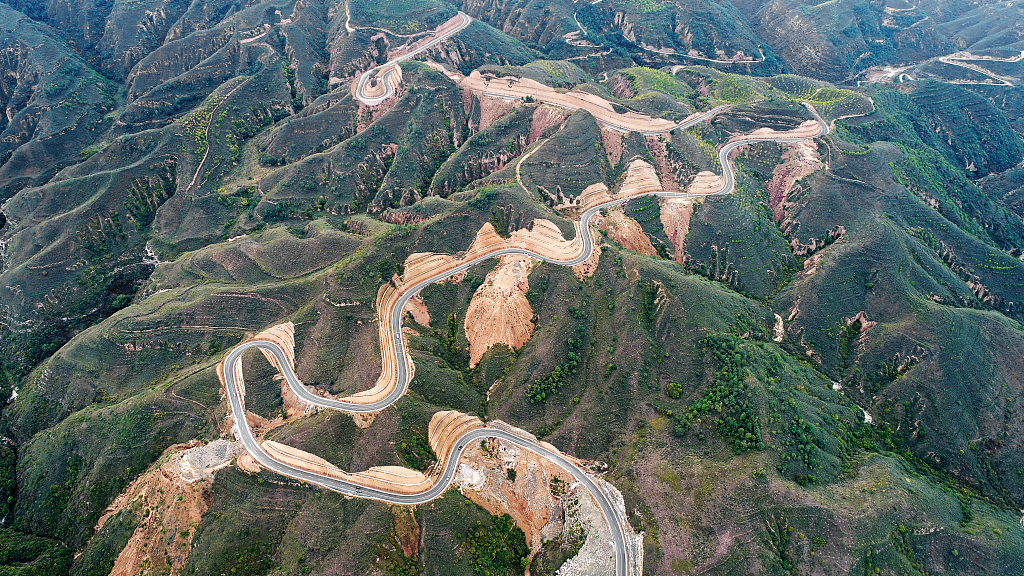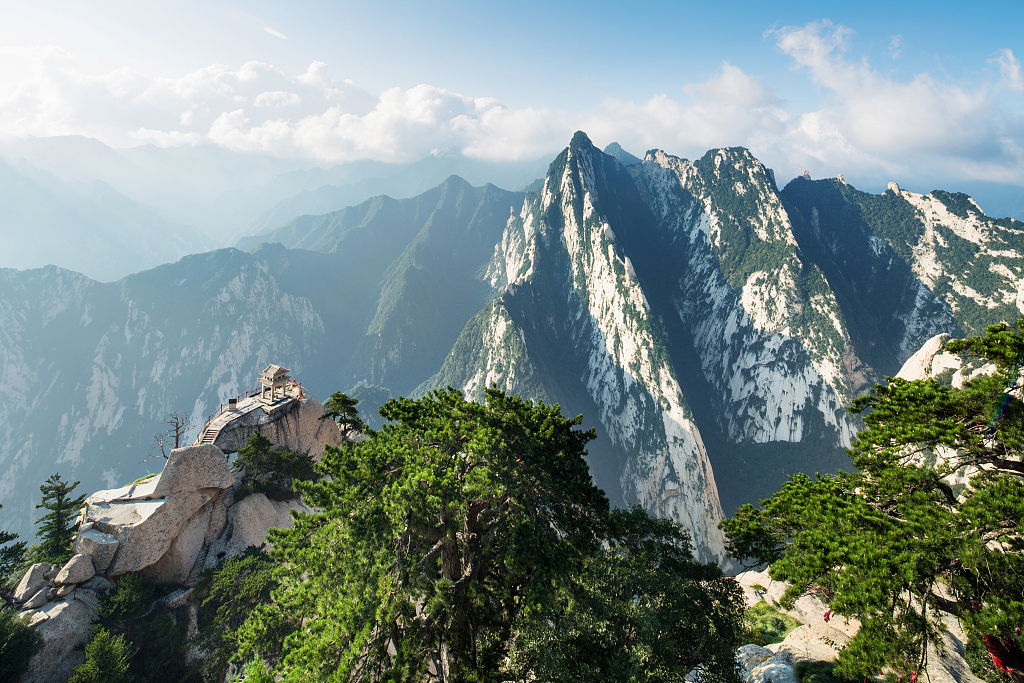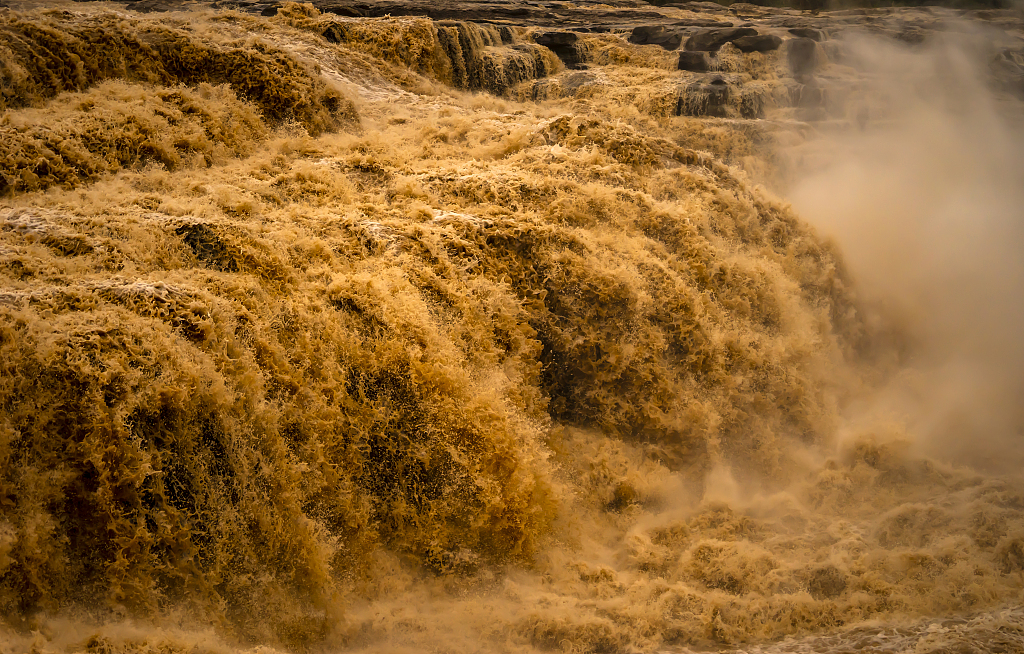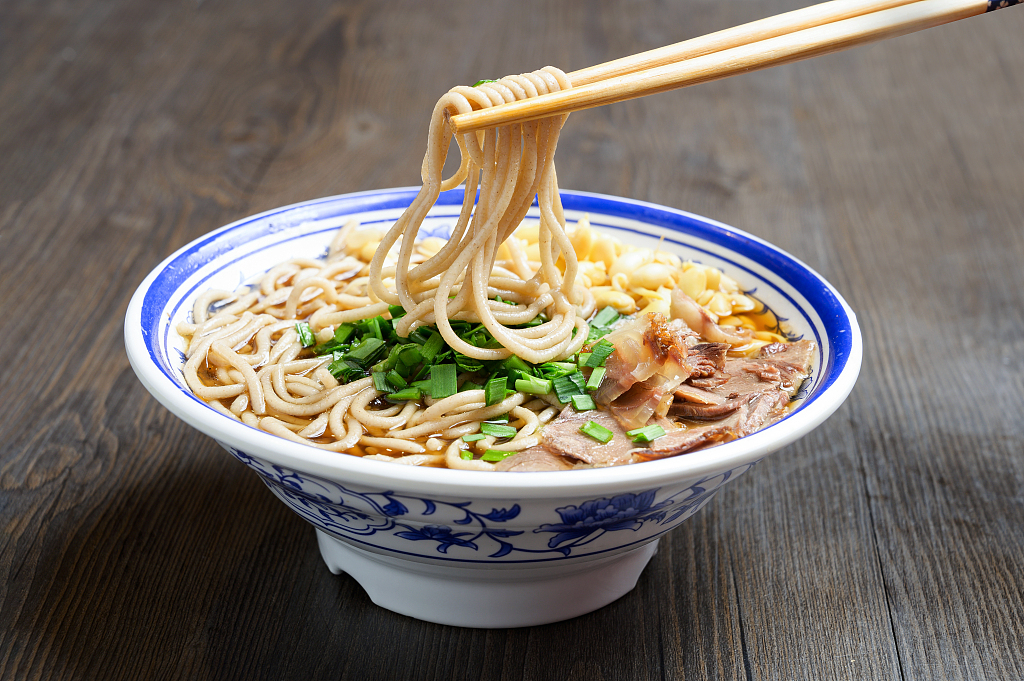
A view of the Loess Plateau along a section of Yanhuang Road in Shaanxi Province /CFP
A view of the Loess Plateau along a section of Yanhuang Road in Shaanxi Province /CFP
Known as the "Mother River of China," the Yellow River originates on the Qinghai-Tibet Plateau, crosses nine provinces and autonomous regions, and eventually flows into the Bohai Sea. The Shaanxi section of the Yellow River begins in Fugu County and ends in Tongguan County, and is regarded as the lifeline of the province.
The name of Shaanxi's Yanhuang Road literally means "Along the Yellow River Road." It stretches over 800 kilometers, beginning in a vast and boundless desert in the north, and winding to wetlands in the south of Shaanxi. Built along the western bank of the Yellow River, this road links over 50 scenic spots and attractions.

Huashan Mountain is a must-visit destination along the Yanhuang Road. /CFP
Huashan Mountain is a must-visit destination along the Yanhuang Road. /CFP
Huashan Mountain, or Mount Hua, is a must-visit destination along the Yanhuang Road. The mountain is located about 120 kilometers east of Xi'an and is among the Five Great Mountains of China, having a long history of religious significance.
Huashan Mountain features towering peaks, steep cliffs, and rugged mountain slopes. The east peak, reaching an altitude of 2,095 meters, is the highest and best known peak of the mountain. From the summit of the east peak, visitors can enjoy magnificent panoramic views of cloud-covered peaks, cliffs, and peculiar rock formations.
For visitors, Huashan Mountain offers various hiking routes and sightseeing options, allowing them to choose different paths based on their physical fitness and time constraints. Climbers can opt for cable car rides or hike up the peaks to admire the breathtaking natural scenery and experience the thrill of mountain climbing.

Hukou Waterfall is the largest waterfall on the Yellow River. /CFP
Hukou Waterfall is the largest waterfall on the Yellow River. /CFP
Heading north along the Yanhuang Road, the Hukou Waterfall in the city of Linfen is definitely worth a stop. The world-famous natural landmark is the largest waterfall on the Yellow River.
Steep walls of stone stand on both sides, and its mouth is a narrow spout. When the Yellow River rushes through the steep riverbank and plunges down from the high cliff, it creates a thunderous water curtain and mist, making a thrilling visual impact.
Tourists can take boats to get a close-up view of the magnificent waterfall, walk along nearby trails to appreciate a full view, and explore the surrounding natural scenery.

Eating a bowl of qiaomian hele is a great choice when in Shaanxi. /CFP
Eating a bowl of qiaomian hele is a great choice when in Shaanxi. /CFP
After enjoying the scenery, eating a bowl of qiaomian hele, or hele buckwheat noodles, is also a great choice when in Shaanxi.
Hele buckwheat is a famous traditional noodle snack made primarily with buckwheat noodles, lamb, potatoes, and cilantro. It is hailed as one of the three great northern noodle dishes, alongside Lanzhou noodles and Shanxi knife-cut noodles.
During summer, it is commonly eaten with refined salt, vinegar, mustard, garlic sauce, sesame paste, and spicy chili oil, making it a refreshing dish to combat the summer heat.
In winter, hele buckwheat noodles are served in a bowl with toppings such as meat sauce and hot bone broth. Additional garnishes like pepper powder, cilantro, garlic sprouts, and seaweed are added, creating a flavorful and comforting dish with a rich broth and chewy noodles.